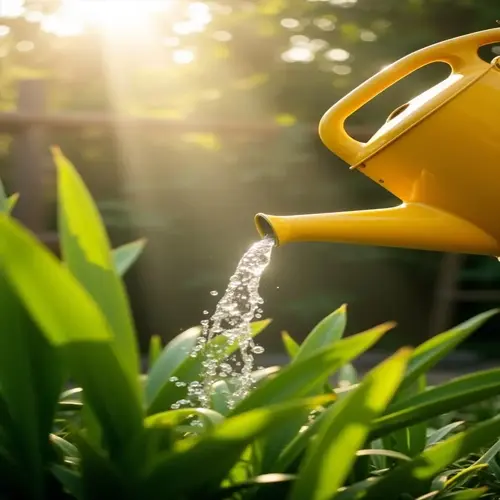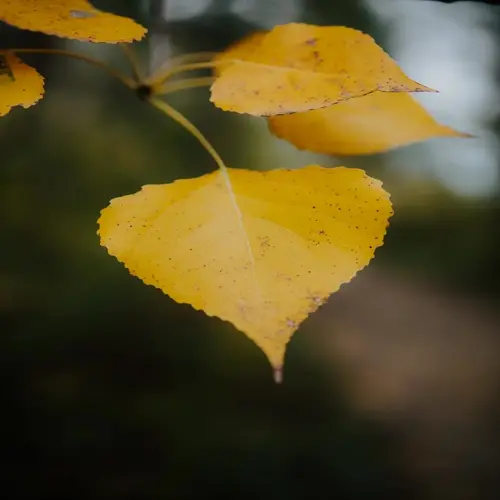10 Acid Loving Plants for Your Garden

Written by
Olivia Mitchell
Reviewed by
Prof. Samuel Fitzgerald, Ph.D.Plants that love acid prefer to grow in soils that are below a pH of 7.0 in order to grow and absorb nutrients.
Examples of acid-loving plants include blueberries, rhododendrons, and azaleas, which will do best in soils with a pH of 4.5 to 6.0.
It is always a good practice to test your soil at least once a season, and if your soil is at pH 7.0 or higher, you can lower the soil pH slightly by mixing in some elemental sulfur or pine needles.
Always use rainwater to water acid-loving plants to avoid adding minerals with an alkaline pH to the soil.
If you are growing acid-loving plants in a container, be sure to use an acidic potting mix and test your soil frequently.
Do not believe myths about coffee grounds being acidic; rather than experimenting with uh, coffee grounds, simply amend your soil with sulfur.
Article Navigation
Acid-loving plants will brighten gardens with colorful blooms and verdant foliage if they receive the ideal soil. These plants thrive in acidic conditions where nutrients such as iron become more readily available. You will find that they typically require less care than picky types of plants. Their natural toughness is evident in areas such as the Pacific Northwest, where acidic soils are prevalent.
Using your soil's pH will work better than trying to constantly adjust it with chemicals. I have years of experience figuring this out in my personal garden, and you will learn to experience the same. Acidic soil has unique benefits for certain plants. It provides optimal growing conditions without requiring the purchase of expensive amendments. Your garden then becomes practically sustainable!
Soils with varying degrees of acidity can greatly differ based on the region. For instance, coastal sites typically have lower, naturally occurring pH. Areas with a mountainous topography may require more consideration. This resource will guide you in selecting plants that are well-suited to your garden's specific conditions. As a result, you will find information specific to nurturing and thriving acid-loving specimens.
What Is Acidic Soil
Measuring soil acidity is done on the pH scale, which ranges from 0 to 14. Acidic soils have a pH below 7. This is significant because some plants absorb nutrients much better in these conditions. Areas of heavy rainfall, such as the Pacific Northwest regions, tend to develop inherent acidity. With the decomposition of organic matter, the pH diminishes over time.
Rainwater leaches alkaline minerals, leading to acidic conditions. Consider the arid conditions of the southwest, where soils remain alkaline. Organic matter, like pine needles, breaks down and releases acids during decomposition. This process is faster in humid environments compared to dry climates.
Acidic soils enhance solubility of iron and aluminum. Plants needing these nutrients gain access. Blueberries utilize iron at low pH levels. Rhododendrons use aluminum to produce extensive flowers. Most plants, however, fight against nutrient uptake in acidic soils.
pH Fundamentals
- The pH scale measures soil acidity from 0 (most acidic) to 14 (most alkaline), with 7 being neutral.
- Acidic soils register below pH 7.0, with optimal ranges between 4.5-6.0 for acid-loving plants.
- Each whole pH unit represents a tenfold difference in acidity, making precise measurement critical.
Formation Factors
- Heavy rainfall leaches alkaline minerals like calcium and magnesium from soil over centuries.
- Decomposing organic matter from conifers or oak forests releases tannic acids that lower pH.
- Certain bedrock types like granite naturally produce acidic soils unlike limestone-based soils.
Testing Methods
- Digital pH meters provide instant readings but require regular calibration for accuracy.
- Test strips offer affordable at-home analysis with color-coded results indicating pH levels.
- Laboratory testing through university extensions delivers comprehensive nutrient reports.
Regional Variations
- Pacific Northwest soils are naturally acidic due to high rainfall and coniferous forests.
- Southwestern soils often trend alkaline, requiring amendments for acid-loving plants.
- Appalachian regions feature variable pH influenced by decaying hardwood leaves.
Nutrient Availability
- Below pH 5.0, aluminum and manganese become soluble and potentially toxic to plants.
- Iron absorption peaks in acidic soils, benefiting plants like azaleas and blueberries.
- Phosphorus binds tightly in alkaline conditions but remains accessible in acidic soils.
Top Acid Loving Plants
Rhododendrons grow best in USDA zones 4-9 with partial shade protection. They require a soil pH in the range of 4.5 to 6.0 for optimal blooming. These evergreen plants are resistant to deer damage. Dwarf varieties of rhododendrons, such as 'PJM', are among the most beautiful small container plants available, thriving in ericaceous compost. Blueberry plants that prefer zones 3-8, with full sun, require strongly acidic soil with a pH of 4.0-5.0 to avoid yellowing leaves. Their antioxidant-rich berries are a valuable source of health. Container gardening is an adaptable feature of highbush varieties.
Hydrangeas thrive in zones 5-9, preferring morning sun and afternoon shade. pH levels below 5.5 produce blue blooms, and above 6.5 pink blooms. Oakleaf hydrangeas offer stunning fall foliage. Compact varieties are ideal for pots. Camellias thrive best in zones 7-10 and prefer a pH level of 5.0-6.5 to prevent their leaves from turning yellow. Winter-spring blooms fill the seasonal gaps. Large nursery containers protect your roots in colder zones.
Japanese maples fit in zones 5-9 and require protection from extreme sun. Slightly acidic soils (pH 5.5-6.5) promote foliage colors. Each tree has seasonal interest, mostly beauty for all seasons. Containers are acceptable using akadama soil. Their gardens must be located in at least zones 7-11 and be situated in a humid environment. pH levels of 5.0-6.0 must be maintained to prevent bud loss. The fragrance of the white flowers perfumes the garden from May to August. If grown in pots, gardenias will be taken indoors if there is frost.
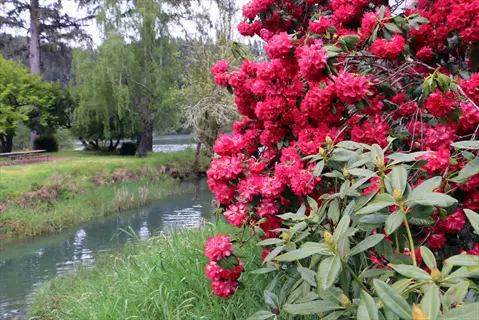
Rhododendrons
- Zones: Thrives in USDA zones 4-9 with partial shade protection from harsh afternoon sun.
- Soil pH: Requires acidic soil between 4.5-6.0 for optimal nutrient absorption and vibrant blooms.
- Care Tips: Plant in well-draining soil amended with peat moss; water deeply twice weekly during dry spells.
- Unique Benefits: Evergreen varieties provide year-round foliage; resistant to common garden pests like deer.
- Blooms: Large clusters of pink, purple, or white flowers appear from April to June.
- Container Suitability: Dwarf varieties like 'PJM' excel in pots with ericaceous compost.
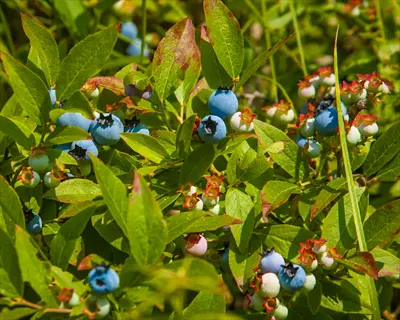
Blueberries
- Zones: Grows best in USDA zones 3-8 with full sun exposure for maximum berry production.
- Soil pH: Demands strongly acidic soil between 4.0-5.0 to prevent iron deficiency and yellow leaves.
- Care Tips: Mulch with pine needles to maintain acidity; requires consistent moisture during fruit development.
- Unique Benefits: High antioxidant berries; fall foliage turns brilliant crimson in colder climates.
- Harvest: Pick ripe berries from June to August; net plants to protect from birds.
- Container Suitability: Ideal for patio containers; choose highbush varieties for smaller spaces.
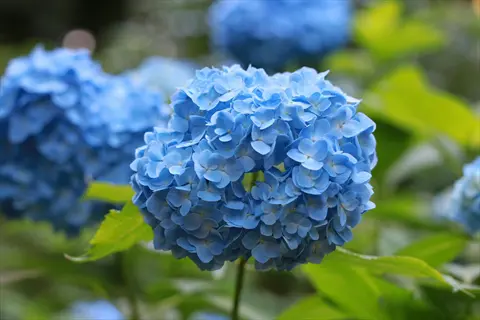
Hydrangeas
- Zones: Flourishes in USDA zones 5-9 with morning sun and afternoon shade protection.
- Soil pH: Soil acidity controls bloom color: blue below 5.5, pink above 6.5.
- Care Tips: Prune spent flowers in spring; avoid high-nitrogen fertilizers that reduce bloom intensity.
- Unique Benefits: Long-lasting cut flowers; oakleaf varieties feature striking fall foliage.
- Blooms: Large flower heads appear June through September; color intensifies in cooler temperatures.
- Container Suitability: Compact 'Cityline' series thrives in pots with pH-adjusted soil.
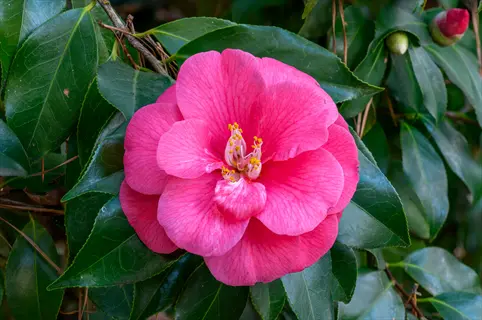
Camellias
- Zones: Best in USDA zones 7-10 with shelter from winter winds and scorching sun.
- Soil pH: Prefers acidic range of 5.0-6.5; alkaline soils cause yellowing leaves (chlorosis).
- Care Tips: Water with rainwater to avoid lime buildup; apply acidic fertilizer in early spring.
- Unique Benefits: Glossy evergreen leaves; blooms when few other plants flower (winter-spring).
- Blooms: Rose-like flowers in white, pink, red from October to April depending on variety.
- Container Suitability: Excellent for large containers; protect roots from freezing in zone 7.

Azaleas
- Zones: Hardy in USDA zones 5-8; deciduous varieties tolerate colder winters than evergreen types.
- Soil pH: Needs 4.5-6.0 pH; alkaline soils cause stunted growth and poor flowering.
- Care Tips: Plant shallowly to avoid root rot; mulch to keep soil cool and moist.
- Unique Benefits: Masses of spring blooms; some varieties like 'Golden Lights' offer fragrant flowers.
- Blooms: Spectacular color display for 2-3 weeks in April-May before summer heat.
- Container Suitability: Dwarf varieties perfect for pots; provide winter protection in zone 5.
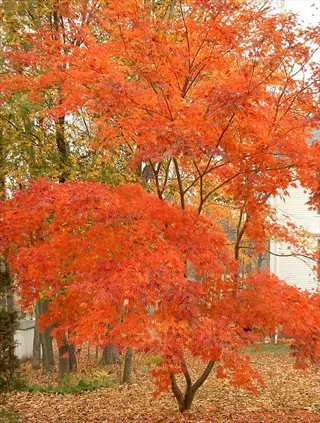
Japanese Maples
- Zones: Suitable for USDA zones 5-9 with protection from harsh afternoon sun.
- Soil pH: Thrives in slightly acidic soil (5.5-6.5) for enhanced leaf color and vigor.
- Care Tips: Shelter from strong winds; water deeply during drought to prevent leaf scorch.
- Unique Benefits: Dramatic foliage colors intensify in acidic soil; provides year-round visual interest.
- Foliage: Spring reds/purples turn vibrant scarlet in fall; laceleaf varieties offer delicate texture.
- Container Suitability: Excellent for containers; use well-draining akadama soil mix.
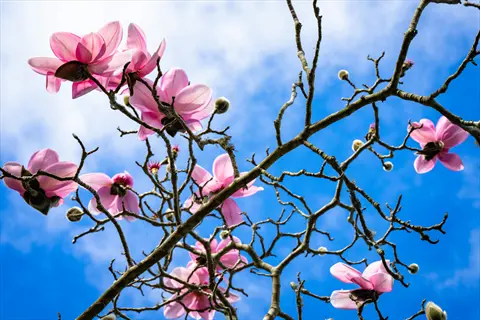
Magnolias
- Zones: Adaptable to USDA zones 4-9 depending on variety; southern types handle more heat.
- Soil pH: Prefers 5.0-6.5; tolerates neutral soils but blooms best in acidic conditions.
- Care Tips: Plant in deep, moisture-retentive soil; avoid root disturbance once established.
- Unique Benefits: Fragrant spring blooms; star magnolias flower as early as March in warm zones.
- Blooms: Large white or pink flowers appear before leaves on bare branches.
- Container Suitability: Smaller varieties like 'Ann' thrive in half-barrel planters.
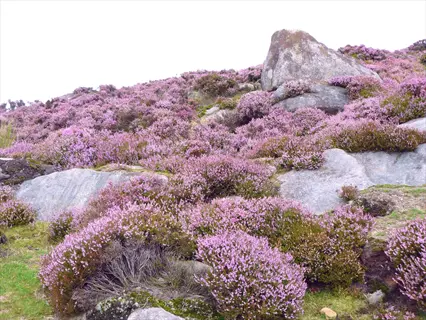
Heathers
- Zones: Cold-hardy in USDA zones 4-8; prefers cooler summer climates.
- Soil pH: Requires strongly acidic soil (4.5-5.5) for best growth and flower production.
- Care Tips: Shear after flowering to maintain compact shape; avoid wet winter soils.
- Unique Benefits: Evergreen ground cover; winter-blooming varieties provide off-season color.
- Blooms: Tiny bell-shaped flowers in white, pink, purple from July to November.
- Container Suitability: Ideal for rock garden containers; combine with dwarf conifers.
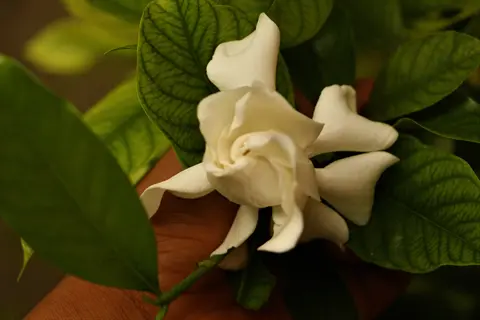
Gardenias
- Zones: Best in USDA zones 7-11; requires high humidity and protection from frost.
- Soil pH: Needs acidic soil (5.0-6.0); alkaline conditions cause yellow leaves and bud drop.
- Care Tips: Mist leaves in dry climates; use acid-forming fertilizer during bud formation.
- Unique Benefits: Intensely fragrant white flowers; glossy evergreen foliage year-round.
- Blooms: Creamy white flowers from May through August; some varieties rebloom in fall.
- Container Suitability: Popular as houseplants; move outdoors in summer in cooler zones.

Potatoes
- Zones: Grown as annuals in all USDA zones; plant after last frost date.
- Soil pH: Thrives in strongly acidic soil (4.8-5.5) to prevent common scab disease.
- Care Tips: Hill soil around stems as plants grow; water consistently during tuber formation.
- Unique Benefits: High-yield crop; acidic soil naturally suppresses fungal pathogens.
- Harvest: Dig new potatoes in 10 weeks; storage varieties mature in 15-20 weeks.
- Container Suitability: Grow in fabric pots or garbage cans filled with acidic compost mix.
Soil Testing and Amendments
Use homemade kits for a quick estimate of soil acidity, or a professional laboratory for more accuracy. A color-coded strip will provide an accurate estimate within ±0.5 pH. Digital meters, such as Luster Leaf, provide instant readings and require calibration monthly. University extensions offer in-depth reports that also include micronutrient readings for large plantings.
Elemental sulfur can be applied at a rate of 1 pound per 100 square feet for each pH unit you need to adjust. Aluminum sulfate works faster at the rate of 5 lb. per 100 sq ft. But it should be handled with care! Always wear gloves and eye protection when using any chemical amendments. If applied to the skin, it may irritate the area and cause rashes.
Precipitation can significantly influence the effectiveness of a soil amendment. In climates with heavy rainfall, such as the Pacific Northwest, it is common for sulfur to leach out of the soil within 12-18 months. In a dry climate, the timeframe may be longer, but reapplication is still important. Pine needle mulch in a wet environment, such as an arena, typically lasts only about a year. Peat moss amendments persist for about a year or two.
DIY Test Kits
- Color-coded strips provide pH estimates within 0.5 accuracy; best for quick checks.
- Require fresh soil samples from 4-6 inch depth mixed with distilled water.
- Results appear in 1 minute; avoid testing within 48 hours of fertilizing.
Digital Meters
- Probe-style devices offer instant readings but require monthly calibration.
- Insert 6 inches into moist soil; avoid rocks and roots for accurate results.
- Top models: Luster Leaf Rapitest (±0.2 pH accuracy), Sonkir MS02 (±0.3 pH).
Lab Analysis
- University extensions provide comprehensive reports including micronutrients.
- Collect 10+ subsamples across garden; mail dry soil in sealed plastic bags.
- Turnaround: 7-10 days; costs $15-$30; recommended before major plantings.
Seasonal Timing
- Test in early spring when soil is workable but before active growth begins.
- Retest every 3 years; annually for vegetable gardens or problem areas.
- Avoid testing during drought or within 4 weeks of lime/sulfur application.
Problem Indicators
- Yellow leaves with green veins signal iron deficiency in alkaline soil.
- Stunted blueberry growth indicates pH above 5.5 needing urgent correction.
- White crust on soil surface suggests alkaline mineral buildup.
Essential Care Guide
Water acid-loving plants based on seasonal needs and plant types. Blueberries require daily watering during the summer when the plant is in fruit, and rhododendrons need watering twice a week (or more frequently). Container plants dry out the quickest, so they require at least daily checks. In bloom periods that include hydrangeas, none of the plants in that genus should need watering as much to avoid the roots from staying soggy. Japanese maples prefer a bi-weekly deep soak.
Opt for pine needle mulch to maintain organic pH levels instead of synthetic mulch. Pine needles gradually acidify the surrounding soil and retain moisture. You cannot receive these benefits from synthetic mulches. Apply 3-inch thick layers of mulch around plants. Replace the mulch each year after the first frost in winter to protect the roots during the cold months.
For those living in growing zones below 5, burlap wraps may protect your evergreens, including rhododendrons, from the frost. In the fall, apply a potassium-based fertilizer to help harden them off. In the spring, when new growth has begun, use an acid-forming fertilizer, such as ammonium sulfate. Blueberries will benefit from a monthly application of cottonseed meal during their active growth period.
Spring Care
- Apply acid-forming fertilizer when new growth emerges (e.g., ammonium sulfate for blueberries)
- Test soil pH before planting; amend if needed with elemental sulfur
- Install drip irrigation systems before summer heat arrives
Summer Maintenance
- Water deeply 2-3 times weekly; use rainwater to prevent mineral buildup
- Mulch with 3 inches of pine needles to retain moisture and maintain acidity
- Inspect for pests like lace bugs on azaleas; use neem oil sprays if needed
Fall Preparation
- Apply potassium-rich fertilizer to harden plants before winter
- Add fresh acidic mulch layer after first frost for root insulation
- Plant spring-blooming bulbs like daffodils in acidic soil areas
Winter Protection
- Wrap evergreens like rhododendrons with burlap in zones below 5
- Water during warm spells if ground isn't frozen
- Prune dead wood only; avoid major cuts until spring
Year-Round Monitoring
- Check soil moisture weekly with probe meter
- Inspect leaves monthly for chlorosis (yellowing between veins)
- Record pH tests quarterly in gardening journal
Container Gardening Solutions
Choosing plastic pots helps retention of pH stability in container gardening. Light colored plastic pots reflect the heat and help prevent root stress. Terracotta offers good breathability but also removes soil moisture rapidly, requiring a plastic liner. Fabric pots have good drainage and allow for drying soil, but require attention to moisture levels, especially for blueberries. Avoid using a metal container, as it alters the soil chemistry.
To create a custom soil for acid-loving plants, first mix 50% ericaceous compost. Then add 30% pine bark fines to enhance the structure. Finally, add 20% perlite for drainage. If you have moisture-loving hydrangeas, add 15% coconut coir. Blueberries also require extra sulfur to be mixed into the soil. Finally, avoid using a standard potting soil that lacks acidity.
Ensure the drainage holes are larger than the manufacturer's recommendation. Drill 3-5 more holes in store-bought pots. Use a layer of gravel at the bottom of the pot for drainage. Use feet to raise pots and help with drainage. Inspect the drainage holes regularly, about monthly, for blockages (especially when the plant is actively growing).
Wrap the containers with bubble wrap insulation in a location where the temperatures drop below zone 7. Place the plants in an unheated garage when the temperatures are frigid, water sparingly, and only when the soil is arid during the dormant period. You will want to prune lightly before spring growth starts to emerge. After the last frost date, return the containers to the outdoors.
Material Choices
- Plastic pots: Lightweight and affordable but may heat up in sun; choose light colors to reflect heat.
- Terracotta/clay: Porous material helps soil breathe but dries quickly; line with plastic to retain moisture.
- Fabric pots: Excellent drainage but require frequent watering; ideal for blueberries and potatoes.
Size Guidelines
- Small shrubs (azaleas): Minimum 18-inch diameter, 16-inch depth for root expansion.
- Blueberry bushes: 20-gallon containers with 18-inch depth for mature plants.
- Trees (Japanese maples): Half-barrels or pots twice the root ball width.
Drainage Essentials
- Drill 3-5 extra holes in store-bought pots lacking sufficient drainage.
- Create 1-inch gravel layer at bottom before adding soil.
- Use pot feet to elevate containers 2 inches above surfaces.
Soil Mix Formulas
- Basic recipe: 50% ericaceous compost, 30% pine bark fines, 20% perlite.
- For moisture retention: Add coconut coir to mix (max 15% volume).
- Nutrient boost: Incorporate slow-release acidic fertilizer pellets.
Seasonal Adjustments
- Summer: Add water-absorbing crystals to soil mix during heat waves.
- Winter: Wrap pots with bubble wrap or burlap in zones below 7.
- Year-round: Top-dress with pine needle mulch to maintain acidity.
5 Common Myths
Pine needles dramatically lower soil pH levels when used as garden mulch in all regions.
While pine needles slightly lower pH during decomposition (typically 0.1-0.3 units), their primary function is maintaining existing acidity rather than altering soil chemistry. In high-rainfall regions like the Pacific Northwest, they help stabilize pH around 5.0-5.5, but in arid Southwest gardens, their impact is negligible. For substantial pH reduction below 5.0, elemental sulfur amendments (1lb/100sq ft) remain more effective than organic solutions like pine needles.
Coffee grounds act as a potent long-term acidifier, offering an alternative to chemical amendments in any garden.
Fresh coffee grounds can achieve a minimal amount of pH reduction, usually by about 0. 2 units, but only for a short-term as the acidity in coffee can neutralize in a few weeks. Coffee grounds do provide a nitrogen-rich organic material, but are far less effective for long-term pH control than chemical amendments like aluminum sulfate. In humid Southern gardens, coffee grounds may, for at least some short-term, provide benefits, but in alkaline soils, like those often found in a Midwest garden, coffee grounds will not lower the pH below 6.5. To achieve sustainable acidification, it is better to use sulfur-based products (not organic alternatives) for more consistent conversions.
Acid toxicities arising from soil pH < 6.0 are detrimental and harmful to all plants regardless of species or regional adaptation.
Some plants such as blueberries thrive in acidic soils (pH 4.0-5.5) because they utilize iron that is otherwise sequestrated at neutral pH. In Appalachian forests, native rhododendrons thrive in substrate that is naturally acidic, while they become chlorotic when grown in alkaline soils typical of the Southwest region. Acid-loving species can exhibit physiological adaptations to acidic soil environment conditions. For instance, azaleas utilize aluminum from acidic soils at soil pH 5.0, while potatoes are resistant to scab disease at soil pH 5.5 and below. Benefits from soil acidity can vary regionally, such as gardening in the Pacific Northwest where soils are naturally acidic, and home gardeners may not have to amend their soils for acid-loving species of plants.
Applying lime to acidic soil raises its pH level indefinitely in all gardening zones.
Lime's effectiveness, however, differs by region: in areas of high rain, such as the Southeast, calcium carbonate leaches out in about 12-18 months, necessitating reapplication every year or so in order to maintain pH levels higher than 6.0. In dry and arid areas, lime remains in the soil for an amount of time, but it continues to break down over time. Other options, such as changed forms of calcium, are faster amendments (like pelletized lime), and organic amendments (like oyster shell meal) generally take longer than inorganic amendments. It is important to conduct a soil tests regularly, as the soil pH will revert - especially in areas with acidic soils such as New England, where applications are required every 2 years or so.
Yellow foliage always indicates irreversible disease rather than reversible soil pH imbalances.
Interveinal chlorosis (yellow leaves with green veins) commonly signals pH-related nutrient lockout, not disease. In alkaline Southwest soils, acid-loving plants develop iron deficiency above pH 7.0, while in acidic Northeast gardens, manganese toxicity occurs below pH 5.0. Regional variations matter: Southern gardeners often misdiagnose this as blight, while Midwest growers confuse it with nitrogen deficiency. Chemical chelated iron works faster than organic remedies for rapid correction in alkaline conditions.
Conclusion
Gardening with acid-loving plants offers beautiful blooms and a bountiful harvest, requiring little effort once established. Acid-loving plants develop a strong root system within the acidic soil, and the amount of fertilizer that is needed is minimized. Acid-loving plants are naturally resilient, requiring less watering and pruning over time. You will enjoy a continuous display of beauty, from rhododendrons to blueberries, with minimal ongoing maintenance.
Try regional adaptations to see what succeeds in a particular microclimate in your garden. For example, test Pacific Northwest natives, like huckleberries, in moist zones. Or, try southwestern natives, like desert willow, in dry areas. Local nurseries have tailored recommendations for your unique soil type. Don't be afraid to fail!
Native acid-soil species build sustainable ecosystems without needing chemical inputs. Mountain laurel is an example of a species that supports local pollinators and helps maintain soil balance. Native acid-soil species are resistant to regional pests and diseases. They are also better at conserving water than non-native species. Your garden is an ecological resource.
External Sources
Frequently Asked Questions
Which plants thrive in acidic soil conditions?
Acid-loving plants include blueberries, rhododendrons, azaleas, hydrangeas, camellias, gardenias, and Japanese maples. These species require soil pH between 4.0-6.0 to properly absorb nutrients like iron and aluminum while preventing toxicity issues.
What plants should avoid acidic soil?
Plants preferring alkaline conditions include lavender, clematis, and boxwood. These species develop nutrient deficiencies and stunted growth in acidic soils below pH 6.0. Their roots struggle to absorb phosphorus and manganese in low-pH environments.
How do I test soil acidity accurately?
Use these reliable methods:
- Digital pH meters for instant readings (calibrate monthly)
- Laboratory analysis through university extensions for comprehensive reports
- DIY test strips for quick at-home checks
- Observing plant symptoms like yellow leaves with green veins
Are coffee grounds effective for acidifying soil?
Coffee grounds provide minimal temporary pH reduction (around 0.2 units) but neutralize quickly. For lasting results, use sulfur-based amendments like elemental sulfur at 1lb per 100 sq ft per pH unit needed.
How often should I water acid-loving plants?
Watering frequency varies:
- Blueberries: Daily during summer fruiting
- Rhododendrons: Twice weekly with rainwater
- Container plants: Until water drains from pot bottoms
- Hydrangeas: When topsoil dries completely
Can I grow acid-lovers in containers?
Yes, use containers with acidic soil mixes:
- 50% ericaceous compost
- 30% pine bark fines
- 20% perlite for drainage
- Refresh soil every 2-4 years depending on plant type
What indicates soil pH problems in plants?
Key symptoms include yellowing between leaf veins (iron deficiency in alkaline soil), stunted growth in blueberries (pH above 5.5), or leaf scorch in Japanese maples. Soil crusting and poor flowering also signal imbalances.
Are hydrangeas truly acid-loving plants?
Hydrangeas thrive in acidic soils (pH 5.5-6.5) where bloom color intensifies. Below pH 5.5, flowers turn blue due to aluminum availability. In alkaline soils above pH 6.5, blooms shift pink and nutrient absorption decreases.
How do I safely lower soil pH?
Effective methods include:
- Elemental sulfur for gradual long-term reduction
- Aluminum sulfate for quick emergency adjustments
- Pine needle mulch for surface acidity maintenance
- Vinegar solutions for temporary container plant fixes
What common myths exist about acidic soil?
Debunked misconceptions include:
- Pine needles drastically acidify soil (only minor impact)
- Lime applications permanently raise pH (requires reapplication)
- Yellow leaves always mean disease (often pH imbalance)
- Coffee grounds replace chemical amendments (ineffective long-term)
